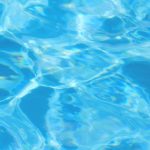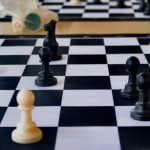Download links
How to install Rediscovering Paradise: Boracay's Timeless Beauty APK?
1. Tap the downloaded Rediscovering Paradise: Boracay's Timeless Beauty APK file.
2. Touch install.
3. Follow the steps on the screen.
Description
Boracay, a small island in the Philippines, has a rich and varied history that reflects the broader narrative of the archipelago itself. Originally inhabited by indigenous groups, the island was relatively unknown to the outside world until the late 20th century. The first recorded mention of Boracay dates back to the 18th century when Spanish explorers documented its existence.
However, it remained largely untouched and uncommercialized for centuries, serving primarily as a fishing and farming community. The local population relied on the island’s natural resources, living in harmony with the land and sea. The transformation of Boracay began in the 1970s when it was discovered by backpackers and adventurous travelers seeking pristine beaches and a tranquil atmosphere.
The island’s reputation as a tropical paradise quickly spread, leading to an influx of tourists. This surge in popularity prompted the development of accommodations, restaurants, and other tourist facilities. By the 1980s, Boracay had firmly established itself as a premier destination in Southeast Asia, attracting visitors from around the globe.
However, this rapid commercialization brought challenges, including environmental degradation and overpopulation, which would later necessitate significant rehabilitation efforts.
Key Takeaways
- Boracay has a rich history dating back to the 1900s when it was used as a hunting ground by Ati tribes.
- The environmental rehabilitation of Boracay in 2018 led to the closure of the island for 6 months to address issues of pollution and overdevelopment.
- Boracay’s beaches are known for their powdery white sand and crystal-clear waters, making them a timeless beauty and popular tourist destination.
- The unique flora and fauna of Boracay include various species of birds, marine life, and lush tropical vegetation, making it a haven for nature lovers.
- Boracay’s cultural heritage is a blend of indigenous Ati traditions and influences from Spanish and Chinese settlers, reflected in its festivals and local crafts.
The Environmental Rehabilitation of Boracay
In 2018, the Philippine government undertook a massive rehabilitation project aimed at restoring Boracay’s natural beauty and addressing the environmental issues that had arisen due to unchecked tourism. The island had been grappling with severe pollution, overcrowding, and inadequate waste management systems. The government declared Boracay a “national priority” for rehabilitation, closing it to tourists for six months to implement necessary changes.
This unprecedented move was met with mixed reactions; while many locals and environmentalists welcomed the initiative, business owners expressed concern over the economic impact of the closure. During the rehabilitation period, extensive measures were taken to improve waste management practices, enhance water quality, and restore natural habitats. The government invested in infrastructure improvements, including the installation of a centralized sewage treatment facility to address the island’s wastewater issues.
The rehabilitation efforts also included reforestation projects aimed at restoring native vegetation and protecting the island’s biodiversity. As a result of these initiatives, Boracay has seen significant improvements in its environmental health, paving the way for a more sustainable tourism model.
The Timeless Beauty of Boracay’s Beaches

Boracay is renowned for its stunning beaches, which are often cited among the best in the world. White Beach, with its powdery white sand and crystal-clear waters, is perhaps the most famous stretch of coastline on the island. This 4-kilometer-long beach is lined with palm trees and offers a vibrant atmosphere filled with beach bars, restaurants, and water sports activities.
Visitors flock to White Beach not only for its beauty but also for its lively ambiance, making it a hub of social activity during both day and night. In addition to White Beach, Boracay boasts several other picturesque beaches that cater to different preferences. Puka Shell Beach, located on the northern tip of the island, is known for its more tranquil setting and unique puka shells that dot its shoreline.
This beach offers a serene escape from the bustling crowds found on White Beach. Meanwhile, Bulabog Beach is favored by water sports enthusiasts for its strong winds and waves, making it an ideal spot for kiteboarding and windsurfing. Each beach on Boracay presents its own unique charm, contributing to the island’s overall allure as a tropical paradise.
The Unique Flora and Fauna of Boracay
| Flora and Fauna | Description |
|---|---|
| Coconut Trees | Boracay is home to numerous coconut trees, which are a prominent part of the island’s landscape. |
| Fruit Bats | The island is inhabited by fruit bats, which can often be seen flying around at dusk. |
| Coral Reefs | Boracay’s waters are home to diverse coral reefs, providing habitat for a wide variety of marine life. |
| Mangroves | The island has mangrove forests that serve as important breeding and feeding grounds for many species of fish and birds. |
Boracay is not only celebrated for its beaches but also for its diverse ecosystems that support a variety of flora and fauna. The island’s lush landscapes are home to numerous plant species, many of which are endemic to the region. Mangroves play a crucial role in maintaining coastal health by providing habitat for marine life and protecting shorelines from erosion.
These vital ecosystems are often overlooked but are essential for sustaining Boracay’s biodiversity. The marine life surrounding Boracay is equally impressive. The waters are teeming with vibrant coral reefs that serve as habitats for countless species of fish and other marine organisms.
Snorkeling and diving enthusiasts flock to sites like Crocodile Island and Yapak to explore these underwater wonders. The rich biodiversity includes not only colorful fish but also sea turtles, rays, and various crustaceans. Conservation efforts have been implemented to protect these marine ecosystems from overfishing and pollution, ensuring that future generations can enjoy Boracay’s natural beauty.
The Cultural Heritage of Boracay
Boracay’s cultural heritage is deeply intertwined with its history and the traditions of its indigenous inhabitants.
Festivals such as Ati-Atihan celebrate their heritage through vibrant parades, traditional music, and dance performances that showcase their unique customs.
The fusion of indigenous culture with influences from Spanish colonization and modern tourism has created a diverse cultural landscape on the island. Local artisans produce handicrafts that reflect both traditional techniques and contemporary designs, offering visitors a glimpse into Boracay’s artistic heritage. Additionally, culinary traditions have evolved over time, blending local ingredients with international flavors to create a unique gastronomic experience that reflects the island’s multicultural influences.
The Thriving Water Sports and Activities in Boracay

Kiteboarding and Windsurfing
Kiteboarding and windsurfing are particularly popular on Bulabog Beach due to its favorable wind conditions. Numerous schools provide lessons for beginners while also catering to experienced riders looking to refine their skills.
Explore the Underwater World
In addition to kiteboarding and windsurfing, Boracay offers opportunities for snorkeling, scuba diving, parasailing, and jet skiing. The vibrant marine life surrounding the island makes snorkeling excursions particularly rewarding, allowing participants to witness colorful coral reefs up close.
Relax and Unwind
Scuba diving trips often include guided tours to some of the best dive sites in the area, where divers can explore underwater caves and encounter diverse marine species. For those seeking a more leisurely experience, sunset cruises provide a picturesque way to enjoy Boracay’s stunning vistas while indulging in local cuisine.
The Culinary Delights of Boracay
The culinary scene in Boracay is as diverse as its visitors, offering an eclectic mix of flavors that reflect both local traditions and international influences. Seafood is a highlight of Boracay’s cuisine, with fresh catches available daily at local markets and restaurants. Grilled fish served with traditional dipping sauces is a must-try dish for anyone visiting the island.
Many establishments pride themselves on sourcing ingredients locally, ensuring that diners experience authentic flavors while supporting local fishermen. In addition to seafood, Boracay boasts a variety of dining options ranging from casual beachside eateries to upscale restaurants offering gourmet experiences. International cuisines such as Italian, Japanese, and Mediterranean can be found alongside traditional Filipino dishes like adobo and sinigang.
Street food vendors also contribute to the culinary landscape with offerings like fish balls and halo-halo—a popular dessert made from shaved ice topped with various ingredients. This vibrant food culture not only satisfies diverse palates but also fosters a sense of community among locals and visitors alike.
The Sustainable Tourism Efforts in Boracay
In recent years, there has been a growing awareness of the need for sustainable tourism practices in Boracay. Following the environmental rehabilitation efforts initiated by the government, various stakeholders—including local businesses, non-governmental organizations (NGOs), and community groups—have come together to promote responsible tourism initiatives. These efforts aim to balance economic growth with environmental conservation while ensuring that local communities benefit from tourism activities.
Sustainable practices include promoting eco-friendly accommodations that prioritize energy efficiency and waste reduction. Many resorts have adopted green certifications and implemented programs to minimize their ecological footprint. Additionally, educational campaigns encourage visitors to respect local customs and protect natural resources by practicing responsible behavior during their stay.
Initiatives such as beach clean-ups and conservation workshops engage tourists in preserving Boracay’s beauty while fostering a deeper appreciation for its unique environment. Through these collective efforts, Boracay is striving to redefine its tourism model by prioritizing sustainability without compromising its allure as a premier travel destination. As awareness grows regarding environmental issues globally, Boracay serves as an example of how tourism can evolve into a more responsible industry that respects both nature and local cultures while providing unforgettable experiences for visitors.
FAQs
What is Boracay?
Boracay is a small island in the Philippines known for its beautiful white sand beaches and crystal clear waters. It is a popular tourist destination for its stunning natural beauty and vibrant nightlife.
What are the popular activities in Boracay?
Some popular activities in Boracay include swimming, snorkeling, scuba diving, kite surfing, and island hopping. The island also offers a variety of restaurants, bars, and shops for visitors to enjoy.
When is the best time to visit Boracay?
The best time to visit Boracay is during the dry season, which typically runs from November to April. This is when the weather is most pleasant and the waters are calm and clear for swimming and water activities.
Is Boracay family-friendly?
Yes, Boracay is a family-friendly destination with plenty of activities and accommodations suitable for families. The island offers a range of options for all ages, from relaxing beach days to adventurous water sports.
Are there any environmental regulations in Boracay?
Yes, in 2018, the Philippine government closed Boracay for six months to undertake major environmental rehabilitation efforts. Since then, the island has implemented strict regulations to protect its natural resources, including limits on the number of visitors and sustainable tourism practices.





